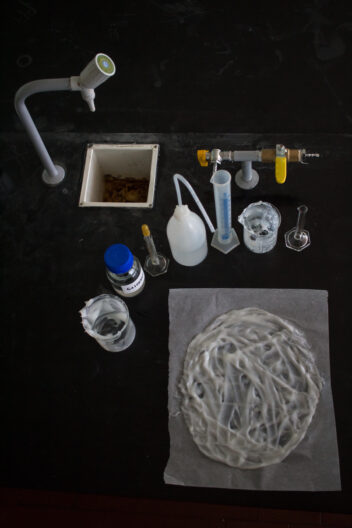Article Bioplastics colud solve a major pollution problemmpublished in Scientific American on 1 July 2019.

Our civilisation is built on plastics. In 2014 alone, the industry generated 311 million metric tons, an amount that is expected to triple by 2050, according to the World Economic Forum. However, less than 15 per cent is recycled. Much of the rest is incinerated, landfilled or abandoned in the environment, where, being resistant to microbial digestion, it can persist for hundreds of years. Plastic waste that accumulates in the ocean causes all sorts of problems, from killing wildlife when mistakenly ingested to releasing toxic compounds. It can even enter our bodies through contaminated fish.
Biodegradable plastics can alleviate these problems, contributing to the goal of a "circular" plastics economy in which plastics are derived from and converted back into biomass. Like standard petrochemical-derived plastics, biodegradable versions consist of polymers (long-chain molecules) that can be moulded in their fluid state into a variety of shapes. However, currently available options, mostly made from corn, sugar cane or waste fats and oils, generally lack the mechanical strength and visual characteristics of the standard types. Recent advances in the production of plastics from cellulose or lignin (the dry matter in plants) promise to overcome these drawbacks. In an additional boon for the environment, cellulose and lignin can be obtained from non-food plants, such as giant reed, grown on marginal land unsuitable for food crops, or from waste wood and agricultural by-products that would otherwise serve no function.
Cellulose, the most abundant organic polymer on earth, is an important component of plant cell walls; lignin fills the spaces in those walls, providing strength and rigidity. To make plastics from these substances, manufacturers must first break them down into building blocks, or monomers. Researchers have recently found ways to do this for both substances. Working with lignin is particularly important because lignin monomers are composed of aromatic rings, the chemical structures that give some standard plastics their mechanical strength and other desirable characteristics. Lignin does not dissolve in most solvents, but researchers have shown that certain environmentally friendly ionic liquids (which are composed mainly of ions) can selectively separate it from wood and woody plants. Genetically modified enzymes similar to those of fungi and bacteria can break down dissolved lignin into its components.
Companies are building on these findings. For example, Chrysalix Technologies, a spin-off from Imperial College London, has developed a process that uses low-cost ionic liquids to separate cellulose and lignin from starting materials. A Finnish biotech company, MetGen Oy, produces a series of genetically modified enzymes that cleave lignins from different origins into components needed for a wide range of applications. And Mobius (formerly Grow Bioplastics) is developing lignin-based plastic pellets for use in biodegradable potting mixes, agricultural mulches and other products.
Many hurdles must be overcome before the new plastics can be widely used. One is cost. Another is minimising the amount of land and water used to produce them. If lignin comes only from waste, water is needed to convert it into plastic. As with any major challenge, solutions will require a combination of measures, from regulations to voluntary changes in the way society uses and disposes of plastics. Even so, emerging methods for producing biodegradable plastic offer a perfect example of how greener solvents and more effective biocatalysts can help generate a circular economy in an important industry.
You can read this article and others of great interest in the special report of Scientific American. The top ten emerging technolgies 2019.


